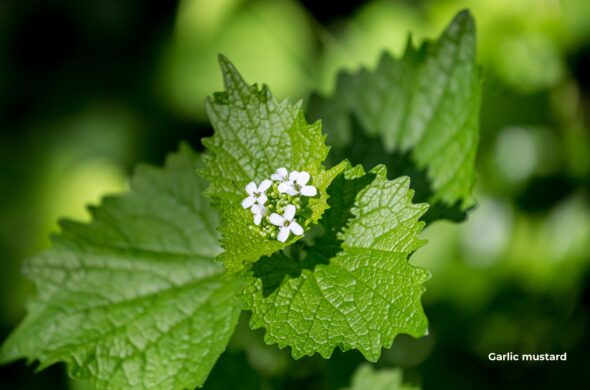Unpleasant Odors and Blue Plants – what’s going on this week in Cherokee Park?
Frequent visitors of the Big Rock area of Cherokee Park may have noticed odd odors and unusually colored plants over the past few weeks. This blue liquid gives plants an alien-like appearance, and it produces a less than desirable odor, but park users have little to worry about. The skilled members of the Team for Healthy Parks have been utilizing an organic herbicide to treat exotic ground cover plants throughout this area.

The three primary exotic species being treated are wintercreeper (Euonymus fortunei), Japanese honeysuckle (Lonicera japonica), and English ivy (Hedera helix). These species grow aggressively and spread on the forest floor, out-competing native herbaceous plants. They can also climb trees, sometimes smothering them to death. To protect native species, the Team for Healthy Parks has been using an organic herbicide to treat these exotic ground cover plants.
The active ingredient in the organic herbicide is pelargonic acid– a fatty acid that is naturally occurring and synthesized from the geranium plant. This herbicide, unlike synthetic herbicides, is non-systemic. This means that it does not translocate the active ingredient throughout the entire plant. Instead, the pelargonic acid breaks down the leaves of the plant, disrupting photosynthesis. The plant then uses energy stored in its root systems to regrow. The organic herbicide is applied again, and the energy stored in the roots is eventually depleted, causing the plant to die. Due to the matting habit and large footprint of these three species, organic herbicide is a better option than synthetic herbicides. Pelargonic acid will not degrade the soil or micro fauna populations on the scale that synthetic herbicides do.
Still, the questions remain – why are the plants blue, and what is that unpleasant odor? To ensure the accuracy of the applications, and to protect the safety of the Team for Healthy Parks and park visitors, the organic herbicide is mixed with a blue tracer dye. This allows the team to see exactly where the organic herbicide is being applied and lets park visitors know what areas to avoid. Herbicide notification signs are placed before every herbicide application. This sign will let you know the date and time the herbicide was applied, what type of herbicide was applied, the approximate area treated, the reason for the application, and how long to remain out of the treated area.
If you come across a treated area, chances are you will smell the organic herbicide before you see the blue dye. The pungent odor can be likened to placing two Crayola crayons directly into your nose. Although unpleasant, this odor alone is not unsafe. If you come across this smell or blue dye, refer to the herbicide applications signs, or do not enter the area for about four hours. This allows the chemical and dye to dry and for the odor to dissipate.
The restoration projects in Olmsted Parks require many tools, and one of those tools is herbicide. The Team for Healthy Parks uses them with accuracy, diligence, and safety- all for the purpose of restoring, enhancing, and protecting the natural areas of the parks.
If you have questions about the restoration efforts in the Olmsted Parks, contact Evan Patrick, Natural Areas Manager for the Olmsted Parks Conservancy. If you’re interested in getting involved with these projects, contact Matt Spalding, Education and Volunteer Program Manager.
Find something similar: Projects Cherokee Park









